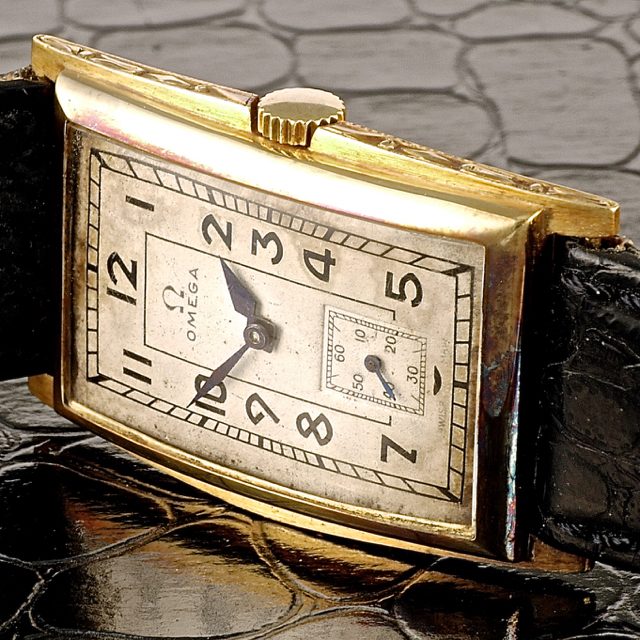
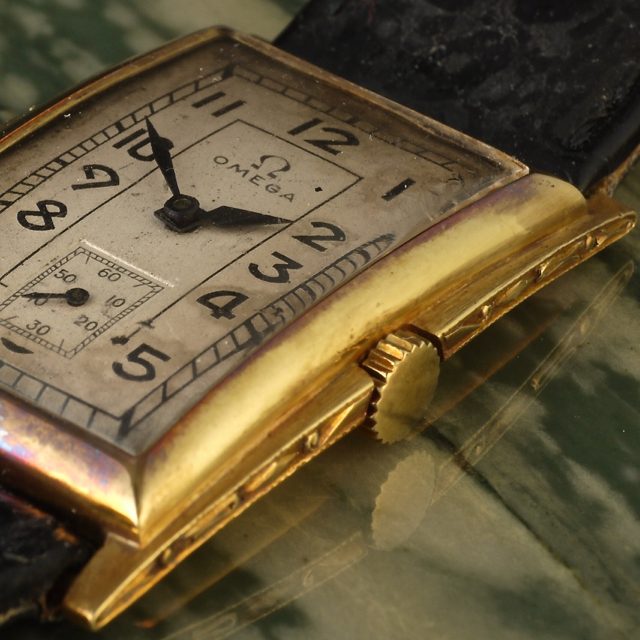
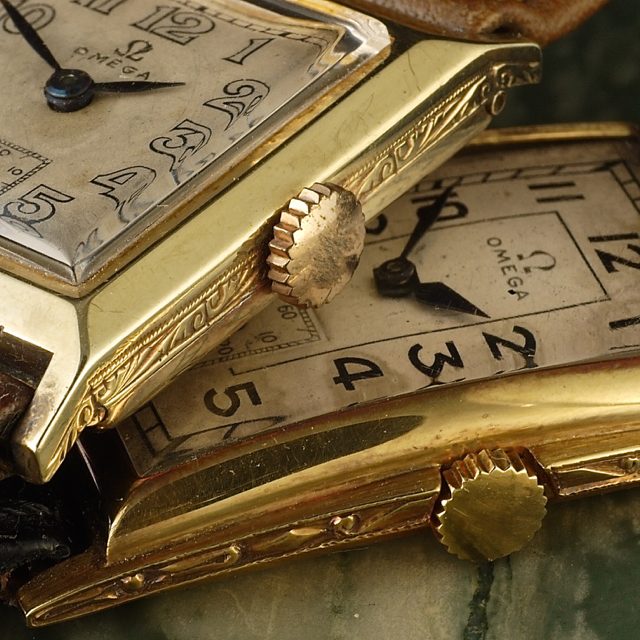
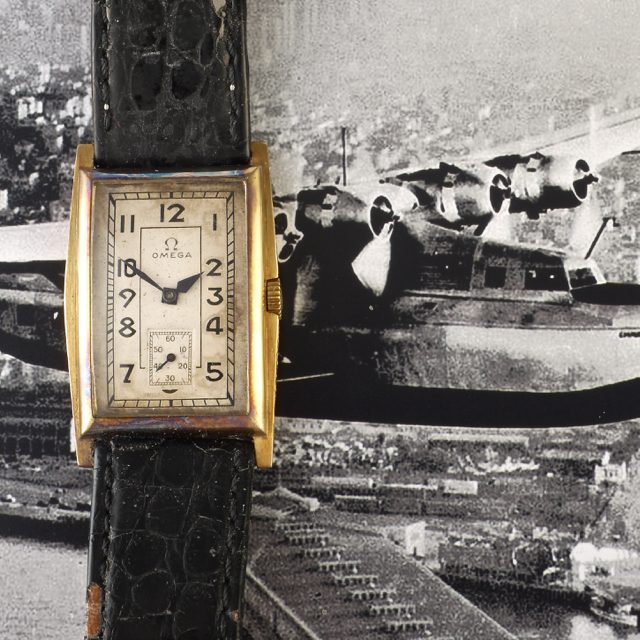
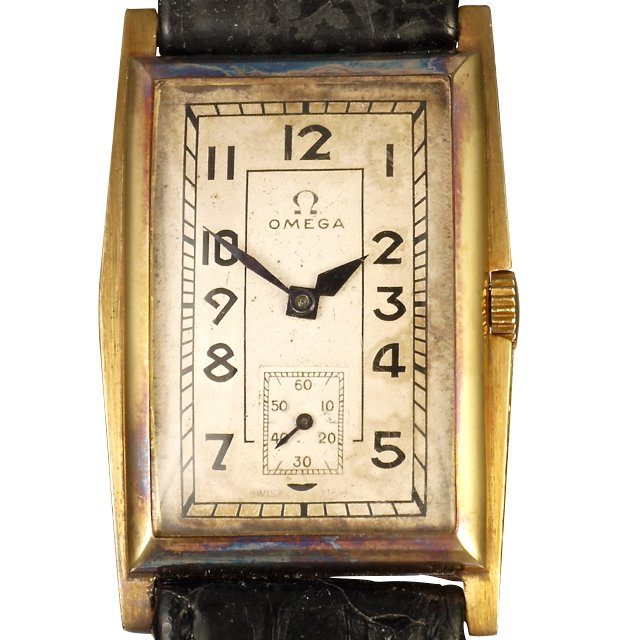
Omega Art Deco
Mao Zedong begins the Long March north with 100,000 soldiers1934 Omega Art Deco ref. OT 901, big middle chased domed rectangular two-piece 25.2 x 31.5mm. case in 18k gold, a very hard to find watch.
Omega was founded in 1848 by Louis Brandt at the age of 23. The brand’s reputation grew fast and in 1895 the watches achieved a precision of 30 seconds a day.
By the turn of the 19th century Omega was one of Switzerland’s largest watch companies with 240,000 watches produced annually and employing 800 people.
Omega made its debut in sports during the Gordon Bennett international ballooning Cup in 1917; since then Omega has gone on to be the official timekeeper at 21 Olympic Games.
In 1936 Omega set the remarkable World precision record of 97.8 points at the Kew-Teddington observatory in England.
In 1957, with motorsport in mind, Omega launched the Speedmaster, which in 1965 was chosen by NASA as its official chronometer in Space. Four years later the Moonwatch was the first watch to be worn on the Moon, when on 21st July 1969 Neil Armstrong made his giant leap for mankind. Currently Omega belongs to the Swatch Group.
The concept of the wristwatch goes back to the early 16th century when Elizabeth I of England received a wristwatch from Robert Dudley in 1571.
Wristlets, as they were called, were reserved for women. Men considered that wristwatches were too small to be properly engineered in order to keep time accurately.
This all started to change in the nineteenth century wars, when early models were essentially standard pocket-watches fitted to a leather strap. By the early 20th century manufacturers began producing purpose-built wristwatches. The Swiss company, Dimier Frres & Cie patented a wristwatch design with the now standard wire lugs in 1903.
After the WWI was over, thousands of veterans were demobilized and went back to civilian life wearing the wristwatch that had served them faithfully. Seeing these battle hardened veterans wearing their wristwatches changed the public perception that wearing a wristwatch was not manly, and sales of the men wristwatches take off.
